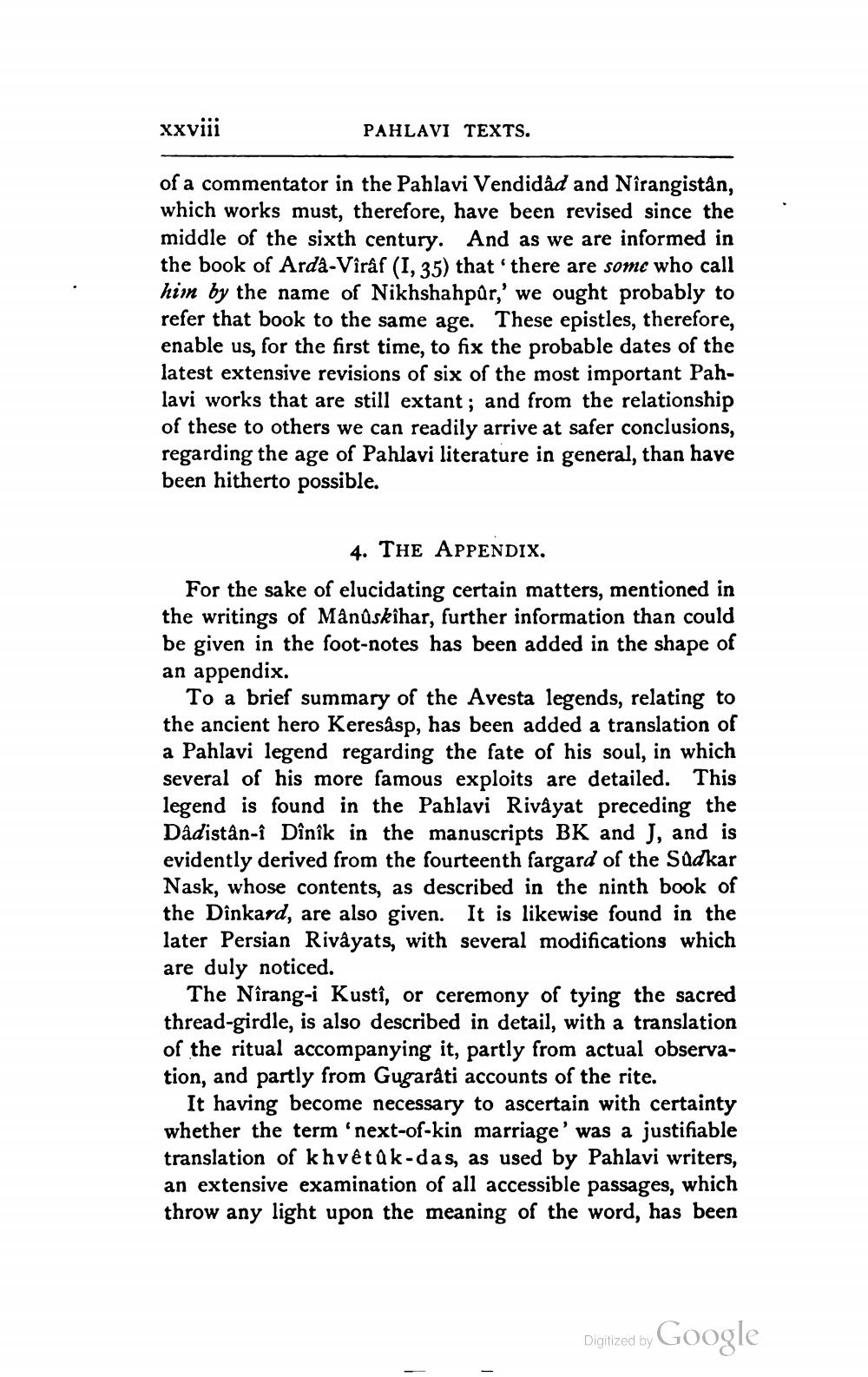________________
xxviji
PAHLAVI TEXTS.
of a commentator in the Pahlavi Vendidad and Nîrangistân, which works must, therefore, have been revised since the middle of the sixth century. And as we are informed in the book of Arda-Viráf (I, 35) that there are some who call him by the name of Nikhshahpûr,' we ought probably to refer that book to the same age. These epistles, therefore, enable us, for the first time, to fix the probable dates of the latest extensive revisions of six of the most important Pahlavi works that are still extant; and from the relationship of these to others we can readily arrive at safer conclusions, regarding the age of Pahlavi literature in general, than have been hitherto possible.
4. THE APPENDIX. For the sake of elucidating certain matters, mentioned in the writings of Manûskihar, further information than could be given in the foot-notes has been added in the shape of an appendix.
To a brief summary of the Avesta legends, relating to the ancient hero Keresåsp, has been added a translation of a Pahlavi legend regarding the fate of his soul, in which several of his more famous exploits are detailed. This legend is found in the Pahlavi Rivayat preceding the Dadistân-î Dînik in the manuscripts BK and J, and is evidently derived from the fourteenth fargard of the Sudkar Nask, whose contents, as described in the ninth book of the Dinkard, are also given. It is likewise found in the later Persian Rivayats, with several modifications which are duly noticed.
The Nîrang-i Kustî, or ceremony of tying the sacred thread-girdle, is also described in detail, with a translation of the ritual accompanying it, partly from actual observation, and partly from Gugaráti accounts of the rite.
It having become necessary to ascertain with certainty whether the term 'next-of-kin marriage' was a justifiable translation of khvêtûk-das, as used by Pahlavi writers, an extensive examination of all accessible passages, which throw any light upon the meaning of the word, has been
Digitized by Google




